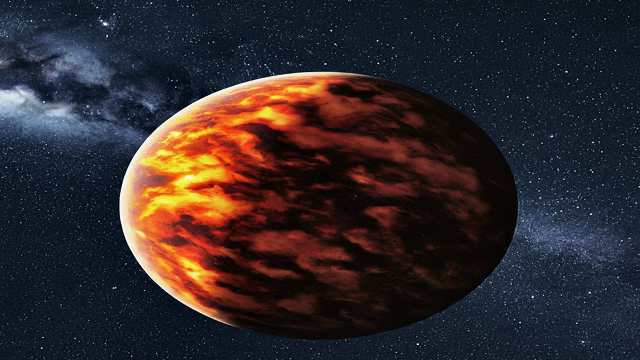The year 2012 was marked by a flurry of apocalyptic predictions, many of which were linked to the end of the Mayan calendar. Among the most sensational claims was the existence of Nibiru, a supposed rogue planet that some believed would collide with Earth. Despite the widespread rumors and fears, scientific evidence has consistently debunked the existence of Nibiru.
This article explores the origins of the Nibiru myth, its connections to other celestial phenomena, and the ongoing search for a hypothetical planet in our solar system.
Origins of the Nibiru Myth
The story of Nibiru can be traced back to 1976 when Zecharia Sitchin published his book, “The Twelfth Planet.” Sitchin claimed to have translated ancient Sumerian texts that described a planet, Nibiru, which supposedly orbits the sun every 3,600 years. His interpretations, however, have been widely criticized by scholars and scientists for lacking rigorous academic support.
In the early 2000s, Nancy Lieder, a self-proclaimed psychic, claimed that aliens had warned her of an impending collision between Earth and Nibiru, initially predicting it would occur in 2003. When that date passed without incident, the prediction was shifted to December 2012, coinciding with the end of the Mayan long-count calendar. This connection fueled public interest and anxiety, leading to widespread speculation about the planet’s potential impact.
Comet Elenin Connection
In 2011, Comet Elenin appeared on the astronomical radar, and many conspiracy theorists speculated that it was the elusive Nibiru in disguise. However, the differences between comets and planets are significant. Comets, like Elenin, have a distinct gas atmosphere known as a coma and a tail, while planets do not.

Instead of colliding with Earth, Comet Elenin passed too close to the sun and disintegrated, leaving behind fragments that will continue their journey through the solar system for thousands of years. This event further illustrated the disconnect between the myths surrounding Nibiru and the realities of celestial mechanics.
Scientific Response to Nibiru
In response to the growing concerns about Nibiru, NASA issued statements clarifying that no large planet was on a collision course with Earth. The agency emphasized that the scientific community had found no evidence supporting the existence of Nibiru.
One of the most compelling arguments against Nibiru’s existence is the gravitational dynamics of our solar system. A planet with a 3,600-year orbit would create significant gravitational disturbances among the other planets. Over time, such a planet would have altered the orbits of neighboring celestial bodies, leading to observable effects that astronomers would have detected.
Moreover, calculations indicate that a planet with such an orbit should have been visible to the naked eye by April 2012, appearing brighter than the faintest stars. The absence of any such sighting by amateur and professional astronomers alike further undermines the Nibiru narrative.
Allure of Conspiracy Theories
Despite the lack of scientific evidence, the Nibiru myth has persisted, fueled by conspiracy theories and a general distrust of governmental and scientific institutions. Some proponents argue that a cover-up is in place, suggesting that astronomers and space agencies are hiding the truth about Nibiru’s existence. However, the reality is that the astronomical community is vast and includes countless independent observers who would have reported any significant findings.
Astronomer David Morrison pointed out that NASA and other space agencies rely heavily on data from independent astronomers, making it unlikely that a significant discovery could be concealed. The collaborative nature of modern astronomy ensures that information is shared widely, making it difficult for any single entity to suppress findings.
Search for Planet Nine
While Nibiru remains a fictional construct, the scientific community is actively investigating the possibility of a real, undiscovered planet in our solar system, often referred to as “Planet Nine.” Researchers, including Mike Brown and Konstantin Batygin, have observed unusual clustering in the orbits of distant objects beyond Neptune. They propose that this clustering could be explained by the gravitational influence of a large, unseen planet.
Calculations suggest that Planet Nine could be about ten times more massive than Earth and orbit the sun at an average distance of approximately 600 times that of Earth. Astronomers are currently using powerful telescopes to search for this hypothetical planet, which, if discovered, would not pose any threat to Earth.
Nibiru in Popular Culture
The concept of Nibiru has also permeated popular culture, most notably appearing in the 2013 film “Star Trek Into Darkness.” In the movie, Nibiru is depicted as a lush, dangerous planet inhabited by primitive tribes, showcasing the allure of the Nibiru myth in fiction. However, this portrayal is purely fictional and bears no relation to the scientific discussions surrounding celestial bodies.
Conclusion: Separating Fact from Fiction
The Nibiru myth serves as a fascinating case study in how misinformation can spread and take root in popular culture. While the idea of a rogue planet threatening Earth captured the imagination of many, the scientific community has consistently debunked these claims.
As we continue to explore our solar system, the search for real celestial bodies, such as Planet Nine, remains a priority for astronomers. Understanding the difference between myth and reality is crucial in an age where information spreads rapidly, and it is essential to rely on scientific evidence rather than sensational claims.
In the end, the world did not end in 2012, and the Nibiru myth serves as a reminder of the importance of critical thinking and scientific literacy in navigating the complexities of our universe.